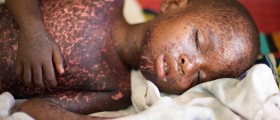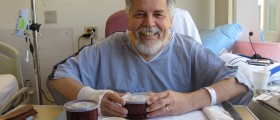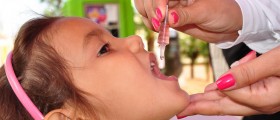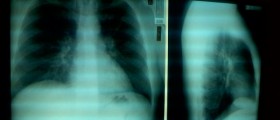
In over 85% of all diagnosed cases of viral meningitis the cause of this condition was found out to be some non-polio enterovirus, while infection with polio, mumps and LCMV (lymphocytic choriomeningitis) viruses are very unlikely to provoke meningitis. In about 30% of viral meningitis there is no identified cause of the disease. However, this statistic is true only for developed countries, since in undeveloped parts of the world polio virus is still no1 cause of debilitating myelitis.
What is Acute Viral Meningitis?
Acute viral meningitis is inflammation of the meninges (protective membrane of the brain and spinal cord), caused by some virus. Sometimes, doctors also call this condition aseptic meningitis, while encephalitis and myelitis are different conditions.
The most common symptom of meningitis is serious headache. Patients may also experience nausea, vomiting, general feeling of illness and some fever. Sore throat, rash and some stomach pain and diarrhea are also frequently reported in meningitis patients. In some cases there is stiff neck and aches and pains in the joints and muscles. A person suffering from viral meningitis may develop aversion to bright lights and feel drowsy or confused. Patient may experience any of these symptoms or can be asymptomatic (have no symptoms) while the infection lasts.
Uncomplicated viral meningitis usually resolves completely after a week or maximally 10 days. Further complications such as meningoencephalitis or meningomyelitis may prolong the recovery. Communicating hydrocephalus is a rare complication and acute hydrocephalus is even more rarely seen in patients suffering from acute viral meningitis.
Some studies have linked mild paresis, loss of coordination and learning disabilities with viral meningitis in children, but these are currently considered to be controversial claims. Many believe that patients suffering from these problems must have had encephalitis or encephalomyelitis.
Some patients might require consultation with neurologist, neurosurgeon, specialist for infectious diseases and neonatology specialist (if the patient is a newborn baby).
Viral Meningitis Management
Patients are usually individually advised what to do, but most people are recommended to stay in bed in the acute phase of viral meningitis. Someone suffering from severe headaches, lethargy or focal signs should be transferred to some medical facility with CT scanner. Children under 1 year of age and babies should be under pediatric care in the hospital.
Admission patients usually receive intravenous hydration (IV fluid) and some empiric antibiotic drugs.
Surgical treatment is not usually required, except in rare cases of hydrocephalus complication.
Aseptic viral meningitis patients can be treated in ambulances, if the patient has non-toxic clinical appearance, normal WBC (white blood cells) count in the serum, mild CSF (cerebrospinal fluid) pleocytosis, negative CSF Gram stain and proper control of all symptoms. These patients may be given acetaminophen and promethazine (anti-emetic drug). Any worsening of the symptoms should be reported to the doctor and the patients must return to the ER.








-and-Multiple-Sclerosis-Differences-And-Similarities_f_280x120.jpg)








Your thoughts on this
Loading...